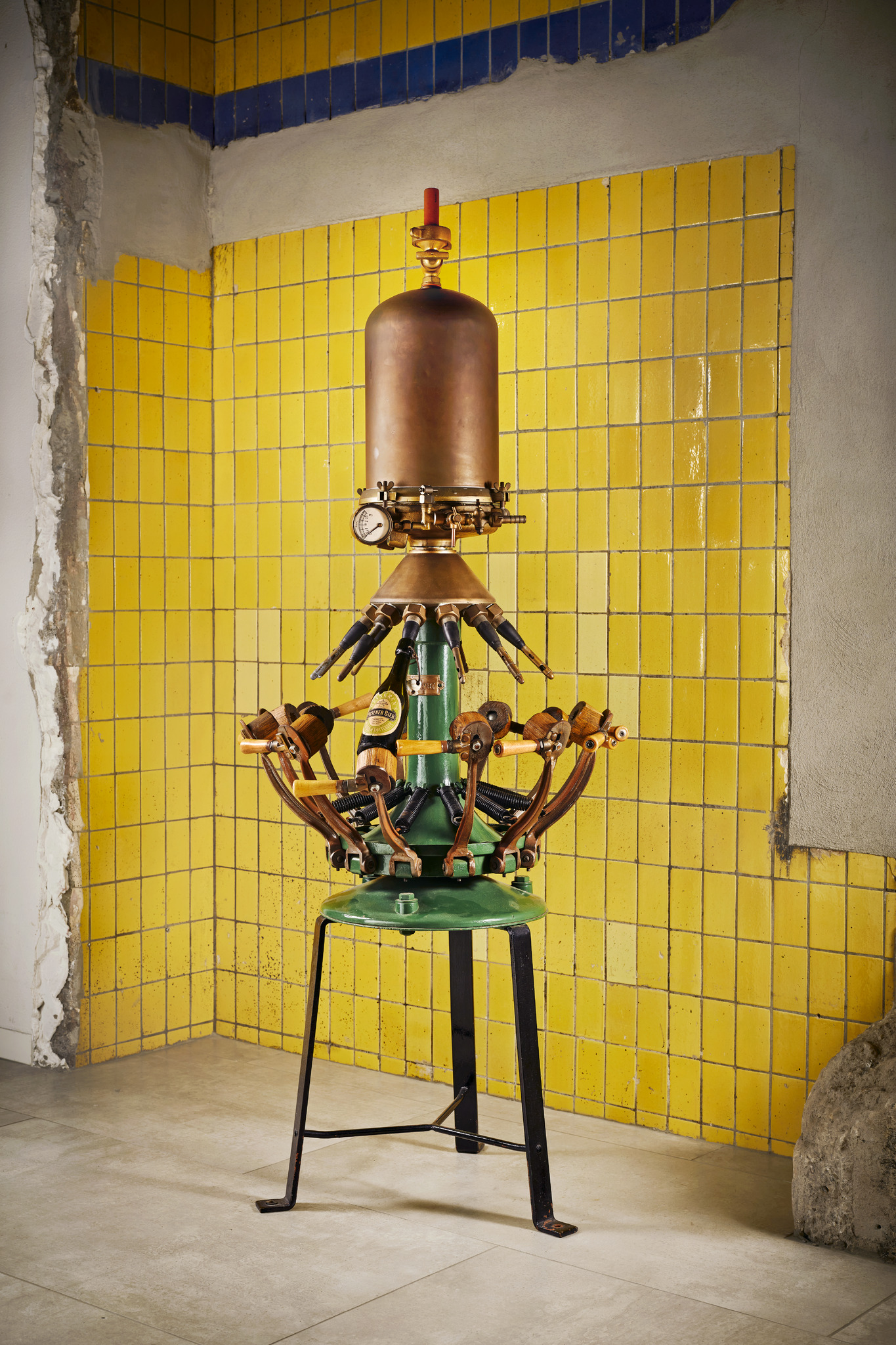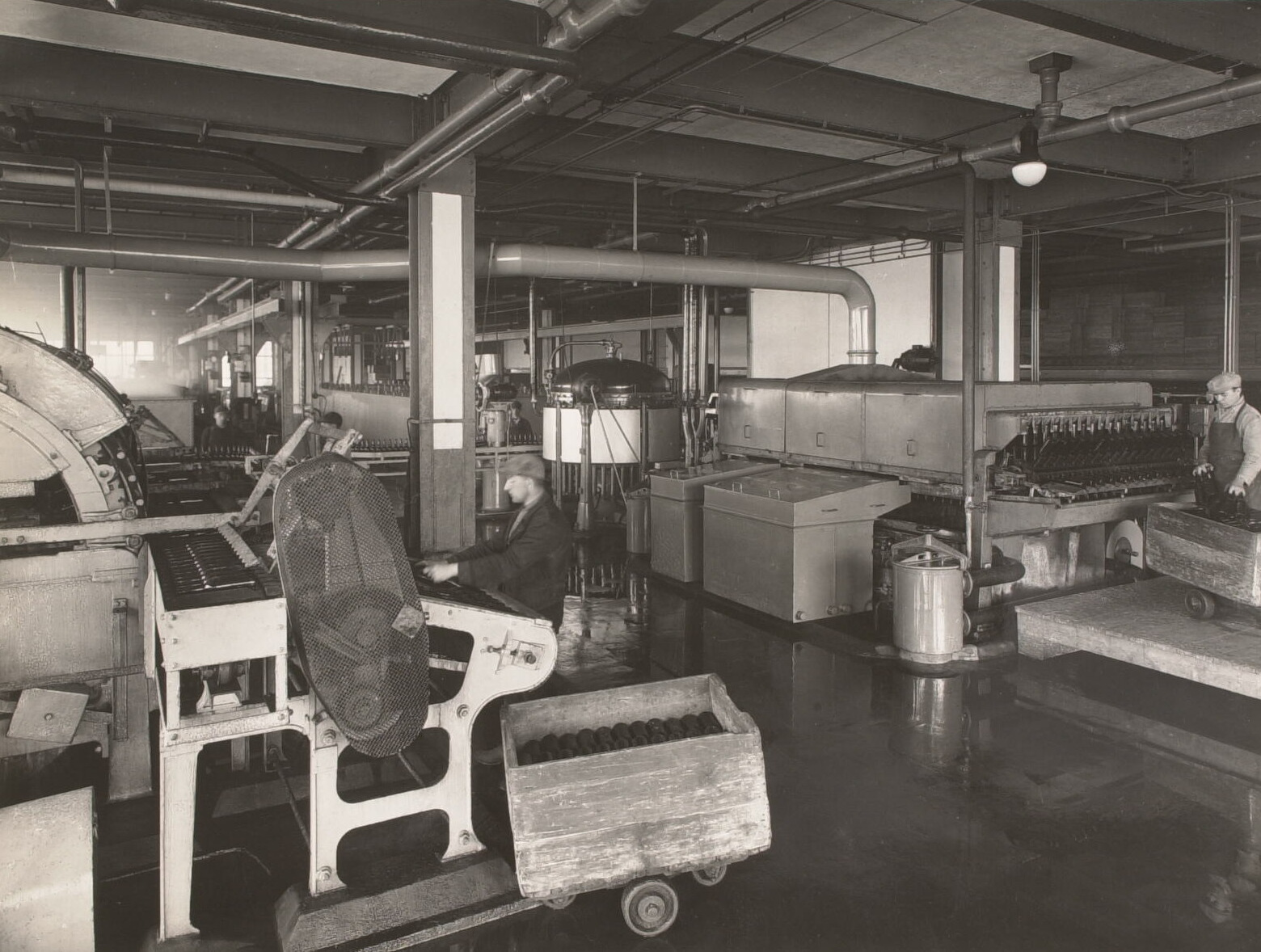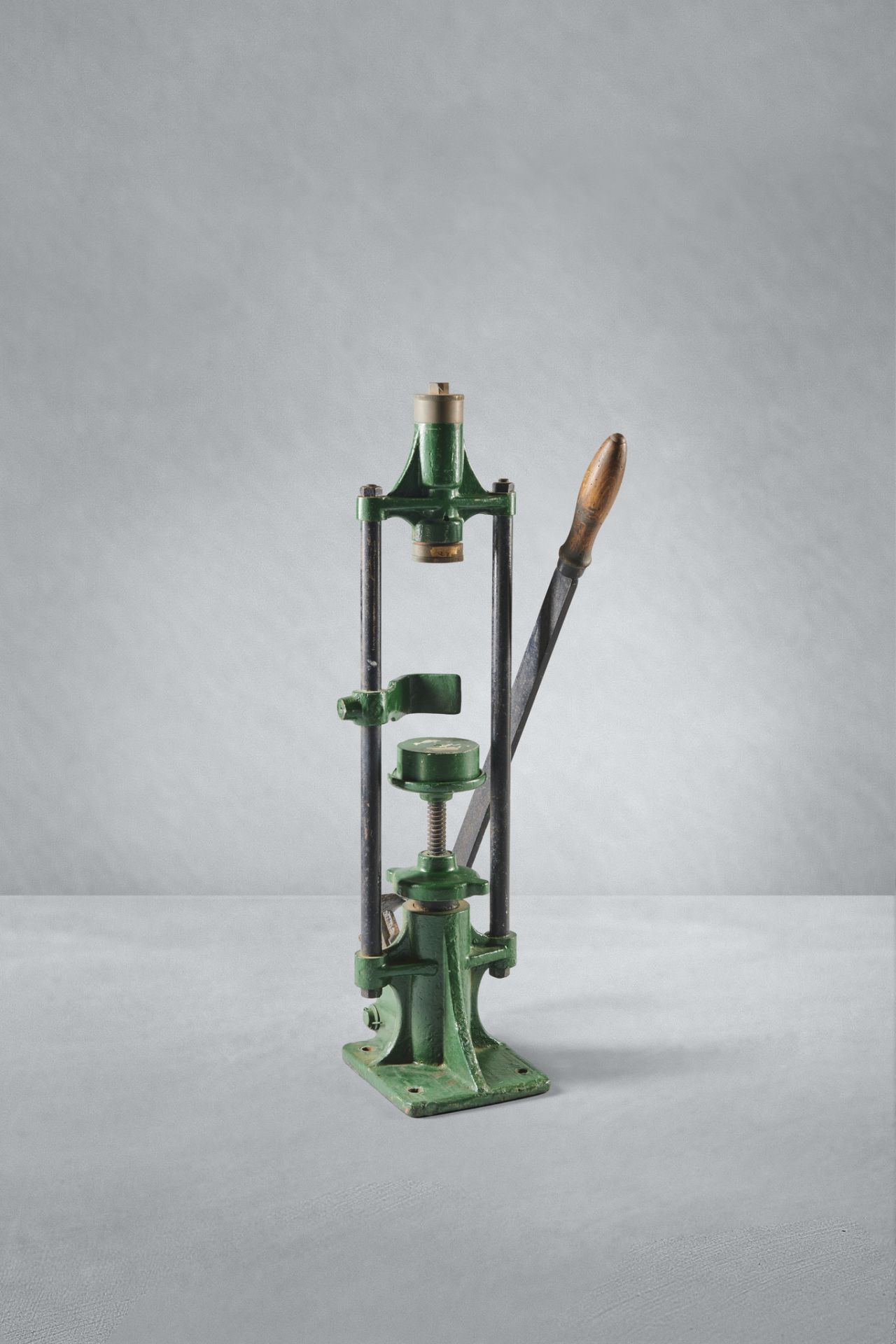Handwork
This hand-operated crown-capping machine tells the tale of beer bottling. In the beginning, breweries bottled on a small scale mainly for export. One such brewery was Heineken Rotterdam, where the pasteurized bottled bier was exported to overseas customers from the nearby port from 1875 on.
Bottled beer was a costly product, because bottling was a labour-intensive process with a low production rate, even using the brewery's professional equipment. That's why master brewer Wilhelm Feltmann of Heineken's Beer Brewing Company (HBM) only pasteurised bottles for long-distance export.
Manually
Thanks to the French invention of the glass-blowing machine in 1894, the production of bottled beer in Europe became cheaper and cheaper. Heineken (HBM) and De Amstel breweries supplied beer and labels to their agents throughout the Netherlands. These were mostly off-licences; however, some pubs, who bottled the beer themselves, also stuck on labels and distributed it. They used simple mechanical devices like the Revolver bottling machine and almost certainly a crown-capping machine like this one.

Bottle market
In 1931, both Heineken and Amstel introduced bottled beer to the domestic market, mainly for pubs and restaurants, where beer was still served from kegs. Customers could now choose from a substantial range of bottled beers. De Amstel's new bottling plant went into operation in the same year. And after thorough preliminary research, the export bottling plant at Heineken Rotterdam was expanded with a machine capable of filling as many as 7,200 bottles an hour.
This immediately provided a solution for the brewery's dissatisfaction with self-bottling agents, who were not always very hygienic. Self-bottled beer also had a limited shelf life, because hardly anyone had their own pasteurising machine.
Angry about the bottling wage
Now that bottling agents no longer had to bottle, they lost out on their 'bottling wage,' giving rise to a lot of ill-feeling. Heineken (HBM) kept its agents happy by deploying them as distributors. However, a large number of De Amstel's agents were furious and some stopped selling Amstel beer all together. De Amstel's management was not too bothered, because they supplied most bottled beer directly to the pub and restaurant trade. Home consumption hardly existed at this time. Dutch housewives bought a few bottles of beer from the off-licence, now and then, but not much more than that.

